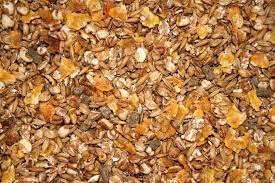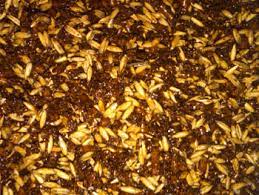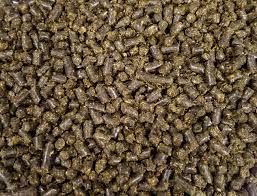*The elite, high intensity sport horse needs 2x the calorie intake each day compared to a same size horse at maintenance? Where do those calories come from? This is Part 1 of a 3 Part Series Titled "Why Feed More than Hay?"
You have to see the cross country course at Maryland’s inaugural 5* Event to believe it. You have to stand beneath the Foundation Fern Hill Bank, peer down the line of corner keyholes, star the devil crab in the eye guarding the water complex, or walk the nearly four miles AND then see it happen to believe the insanity of this sport- or rather the bravery and athleticism that lies within the heart and lungs of the elite event horse. As a nutritionist watching the galloping up close, I kept thinking about the insides of those horses. I considered and then calculated the insane amount of calories that these horses are consuming to sustain the level of speed, distance and effort required in the weeks and months leading up to such a competition.
Let's do the math, shall we?!?
I’d estimate that the average 5* horse I saw galloping around the track is roughly 600 kilograms (1,320 pounds). At this size and intense level of workload, we can assume that this average 5* horse needs over 41 Megacalories per day just to maintain body condition (NRC, 2007). For most of these horses, hay can not provide that amount of calories alone. Even good quality alfalfa at 1.11 Megacalories per pound (Equi-Analytical Common Feed Profile) could not sustain this horse seeing as they would have to consume over 37 pounds or roughly 7-8 flakes each day (2.8% of their body weight) to obtain that many calories. Now, because their are disadvantages to 100% alfalfa diets (I.e. cost, availability, enteroliths, excess protein), let’s assume that 50% of their forage intake is from decent quality grass hay (0.94 MCal/lb) and 50% is from alfalfa (1.11 MCal/lb) at an optimistic 2.5% of body weight. That means that they are able to consume possibly 33-34 MCals per day from hay alone. Where will the other 8 required MegaCalories come from?
This is all to say IF you can get them to eat that much hay. Many elite eventers are not as food motivated as we’d like them to be or simply can not consume that amount of volume each day. The stress of training, traveling and competing at such a high level takes its toll on the digestive system and mentally they aren’t in the mood to eat. Plus, the hours in the saddle is time away from eating which means that a vast amount of food needs to be consumed in a smaller number of hours. Take picky eaters and daily schedules into account and it's more likely that the average elite sport horses are consuming only 2% of body weight in forage. That means there's a 15 MegaCalorie deficit.
*High calorie performance feeds can look very different from one another. Some get more calories from carbs, some from fat and others from a combination of both.
The answer to high intensity work loads is high density feed products. When 0.9 to 1.2 Mcals per pound isn’t dense enough, then we have to substitute some of that forage with feed products to increase the caloric density of the diet. Feed ingredients such as oats, corn, barley, vegetable oils, and rice bran are the most common ways to do this, but rarely on their own. The very best equine performance mixes can offer about 1.6 Megacalories per pound (unfortunately not found on the feed label due to regulation). Now that may not seem like much of an increase, but it only takes 5 lbs per day of high energy performance feed to meet the calorie requirements of a good hay eater. However, it may take 9.4 lbs per day to meet the calorie demands of an average hay eater. For really poor hay eaters (or elite horses eating poor quality hay) a trainer/rider may need to feed up to 12 lbs per day of a performance feed.
I do this math to illustrate the point that hay alone is not always sufficient to meet a horse's calorie requirement. There actually is a time and place for horses to eat 6, 8, 10 or even 12 lbs per day of a high performance feed. The feeding directions are not lying, and feed companies are not trying to kill horses. Perhaps your horse doesn’t need the 5-12 pounds of grain required of an elite three day athlete, but maybe your horse does need more caloric dense feed stuffs than you’re providing now. If your horse is struggling right now to maintain weight, then I suggest that you take a good look at the total caloric density of your forage and other feed stuffs. Poor understanding of caloric density is why many hard keepers stay underweight.
If you are struggling to maintain weight on your horse, schedule a FREE 15 Minute Discovery Call with Natalie at On Course Equine Nutrition to find out more about your horse's caloric needs. CLICK HERE

This past weekend, 42 horses attempted Ian Stark’s first FEI 5* course which covered nearly four miles at 21 miles per hour (570 meters per minute). Multiply that 41 Mcals per day by 42 horses and you get 1,722 Megacalories. That's enough energy to power 67 average US homes for one day!!! Insane, yes! Beautiful, absolutely! I can't wait for the next one!






Comments